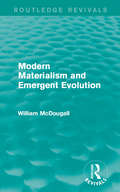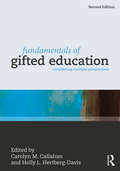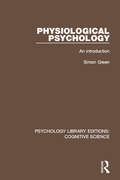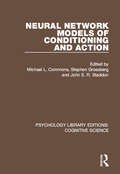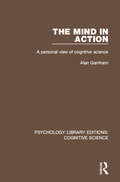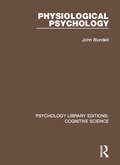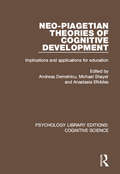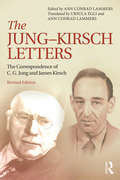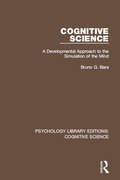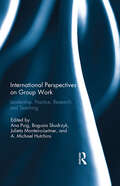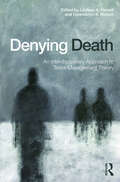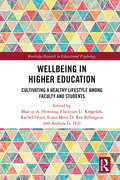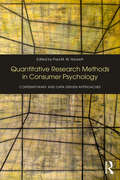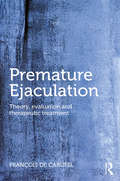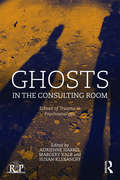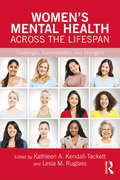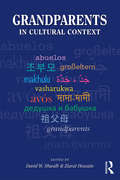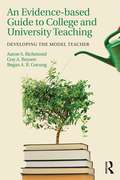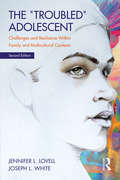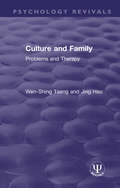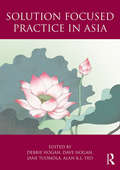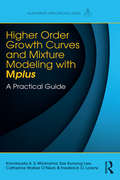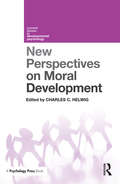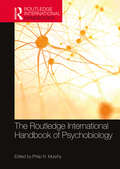- Table View
- List View
Modern Materialism and Emergent Evolution (Routledge Revivals)
by William McDougallOriginally published in 1929, McDougall examines the pertinent conflict between religion and science. His work exhibits the failure of scientists to explain human action mechanistically (the essence of modern materialism), establishes purposive action as a type of event radically different from all mechanistic events, and justifies the belief in teleological causation without which there can be neither religion nor morals. This title will be of interest to students of both the Humanities and Sciences, particularly those studying psychology and philosophy.
Fundamentals of Gifted Education: Considering Multiple Perspectives
by Carolyn M. Callahan Holly L. Hertberg-DavisThe field of gifted education is characterized by a perplexing array of perspectives concerning such fundamental issues as definition, identification, curriculum, social and emotional development, and underserved populations. Fundamentals of Gifted Education provides a coherent framework for planning effective programs, providing appropriate educational services, and evaluating programs for the gifted. Parts are organized around fundamental issues confronting the field and follow a common structure: an introductory chapter that provides an overview of the theme of that part as well as guiding points and questions for the reader followed by representative point-of-view chapters written by leading experts that provide varied perspectives on the topic at hand.
Physiological Psychology: An Introduction (Psychology Library Editions: Cognitive Science)
by Simon GreenOriginally published in 1987 this title was designed as a textbook for first degree students of psychology and provides an introduction to the major topics within the subject of physiological psychology. The aim was to cover these major subject areas and at the same time to provide indications of advances made in the previous two decades. Today the book is still suitable for all levels of study, from beginning students to final year level, who wish to cover historical aspects of physiological psychology.
Neural Network Models of Conditioning and Action (Psychology Library Editions: Cognitive Science)
by MICHAEL L. COMMONS; STEPHEN GROSSBERG; JOHN E. R. STADDONOriginally published in 1991, this title was the result of a symposium held at Harvard University. It presents some of the exciting interdisciplinary developments of the time that clarify how animals and people learn to behave adaptively in a rapidly changing environment. The contributors focus on aspects of how recognition learning, reinforcement learning, and motor learning interact to generate adaptive goal-oriented behaviours that can satisfy internal needs – an area of inquiry as important for understanding brain function as it is for designing new types of freely moving autonomous robots. Since the authors agree that a dynamic analysis of system interactions is needed to understand these challenging phenomena – and neural network models provide a natural framework for representing and analysing such interactions – all the articles either develop neural network models or provide biological constraints for guiding and testing their design.
The Mind in Action: A Personal View of Cognitive Science (Psychology Library Editions: Cognitive Science)
by Alan GarnhamCognitive science – which draws on ideas from psychology, philosophy, linguistics and artificial intelligence (AI) – attempts to explain our mental life within a scientific framework. Its goal is, thus, to remove the last major obstacle to a unified scientific account of the natural world. In this title, originally published in 1991, Alan Garnham provides an invaluable introduction to this exciting new development in the study of mind. The Mind in Action focuses on the development of a systematic explanation of cognition, rather than on facts about the way we perceive things, remember them, talk about them, think about them, and interact with them. The author looks in detail at the nature of scientific explanations, the reasons for developing them, and the way they are assessed. He describes the work carried out by cognitive scientists and considers the questions that motivate it. He introduces the computational metaphor for the mind, and explains how flushing out the metaphor might lead to an integrated scientific account of mental phenomena. Designed primarily for people about to embark on courses in cognitive science and related disciplines, The Mind in Action captures the liveliness and excitement of debates about the mind. It is readily accessible to anyone with an interest in how the mind works, avoiding technical terms where possible and explaining them fully where they are necessary.
Physiological Psychology (Psychology Library Editions: Cognitive Science)
by John BlundellPhysiological psychology deals with the interaction between ‘under the skin’ physiological variables and the personal and social context in which organisms live. Originally published in 1975, much of this book has relevance for the understanding of human action: knowledge of physiological mechanisms underlying psychological functions can throw light on conditions such as obesity, schizophrenia, and the emotional disorders, and on procedures such as psychosurgery and drug therapy.
Neo-Piagetian Theories of Cognitive Development: Implications and Applications for Education (Psychology Library Editions: Cognitive Science)
by Andreas Demetriou Michael Shayer Anastasia EfklidesPiagetian theory was once considered able to describe the structure and development of human thought. As a result, it generated an enthusiasm that it could direct education to develop new teaching methods, particularly in science and mathematics. However, disillusionment with Piagetian theory came rather quickly because many of its structural and developmental assumptions appeared incongruent with empirical evidence. In recent years several neo-Piagetian theories have been proposed which try to preserve the strengths of Piaget’s theory, while eliminating its weaknesses. At the same time several other models have been advanced originating from different epistemological traditions, such as cognitive/differential psychology or socio-historical approaches. Originally published in 1992, this title was unique in representing most of these theories and traditions. Specifically, the authors focus their work on the educational implications of their research. The chapters are organised in three parts: the first part presents some widely known models of cognitive development and discusses their implications for different aspects of education; the second part is devoted to learning and cognitive acceleration; while part three highlights teaching methods that would improve the acquisition of particular skills in specific areas. Written by an eminent group of truly international contributors, this title will still be useful to students and researchers in cognitive development and education, as well as educational policy makers.
The Jung-Kirsch Letters: The Correspondence of C.G. Jung and James Kirsch
by Ann Conrad LammersThis book charts Carl Gustav Jung’s 33-year (1928-61) correspondence with James Kirsch, adding depth and complexity to the previously published record of the early Jungian movement. Kirsch was a German-Jewish psychiatrist, a first-generation follower of Jung, who founded Jungian communities in Berlin, Tel Aviv, London, and Los Angeles. Their letters tell of heroic survival, brilliant creativity, and the building of generative institutions, but these themes are darkened by personal and collective shadows. The Nazi era looms over the first half of the book, shaping the story in ways that were fateful not only for Kirsch and his career but also for Jung and his. Kirsch trained with Jung and acted as a tutor in Jewish psychology and culture to him. In 1934, fearing that anti-Semitism had seized his teacher, Kirsch challenged Jung to explain some of his publications for the Nazi-dominated Medical Society for Psychotherapy. Jung’s answer convinced Kirsch of his sincerity, and from then on Kirsch defended him fiercely against any allegation of anti-Semitism. We also witness Kirsch’s lifelong struggle with states of archetypal possession: his identification with the interior God-image on the one hand, and with unconscious feminine aspects of his psyche on the other. These complexes were expressed, for Kirsch, in physical symptoms and emotional dilemmas, and they led him into clinical boundary violations which were costly to his analysands, his family and himself. The text of these historical documents is translated with great attention to style and accuracy, and generous editorial scaffolding gives glimpses into the writers’ world. Four appendices are included: two essays by Kirsch, a series of letters between Hilde Kirsch and Jung, and a brief, incisive essay on the Medical Society for Psychotherapy. This revised edition includes primary material that was unavailable when the book was first published, as well as updated footnotes and minor corrections to the translated letters.
Cognitive Science: A Developmental Approach to the Simulation of the Mind (Psychology Library Editions: Cognitive Science)
by Bruno G. BaraOriginally published in 1995, this book is about the conduct of cognitive science rather than what cognitive science is. It has three main objectives. First, it describes the birth of cognitive science. Second, it outlines the method of enquiry which characterises and defines cognitive science. This method uses the techniques of artificial intelligence based on the assumption that mental activity can, in principle, be reproduced by a computer program. Third, the book describes the state of the art in relevant areas, with particular attention to application fields such as pedagogics, human–machine interaction, and psychotherapy. The developmental approach is emphasised and highlights the fact that developmental aspects are essential in order to comprehend the steady mode of functioning achieved once a person has reached total maturity. Cognitive science is not presented as a definitive method for the analysis of the mind, though the author’s conclusion is that it is the best of all possible methods today. At the time of publication this book would have been useful as an advanced textbook for students on courses specialising in cognitive science, and as a source of further information for those working in related areas such as cognitive psychology, linguistics, and computer science. It will still be of interest to experts and students in the field of cognitive science.
International Perspectives on Group Work: Leadership, Practice, Research, and Teaching
by Ana Puig Bogusia Skudrzyk Julieta Monteiro-Leitner A. Michael HutchinsThe counselling profession in the United States is calling for increased international collaboration, engagement, and understanding of the global issues which impact the way in which counsellors conduct their professional practice, teaching, and research. This book captures the experiences of group workers the world over, inviting them to describe how they facilitate group work to restore wellness, promote healing, and create opportunities for reducing isolation and alienation by tapping into the wisdom of multicultural or indigenous practices. The group work profession underscores the importance of training and service delivery that is rooted in humanistic narratives, with a focus on understanding cross-cultural dynamics. Included in this collection are examples of the rich, creative, and diverse world of group work applications, all of which contribute to a greater knowledge, awareness, and understanding of the many ways in which the power of group membership and leadership can be harnessed for positive change. Group work teachers, practitioners, and counsellor educators will enjoy learning about these creative and important efforts, and take away ideas to implement in their own group work. This book was originally published as two special issues of The Journal for Specialists in Group Work.
Denying Death: An Interdisciplinary Approach to Terror Management Theory (The\enlightenment World Ser.)
by Lindsey A. Harvell Gwendelyn S. NisbettThis volume is the first to showcase the interdisciplinary nature of Terror Management Theory, providing a detailed overview of how rich and diverse the field has become since the late 1980s, and where it is going in the future. It offers perspectives from psychology, political science, communication, health, sociology, business, marketing and cultural studies, among others, and in the process reveals how our existential ponderings permeate our behavior in almost every area of our lives. It will interest a wide range of upper-level students and researchers who want an overview of past and current TMT research and how it may be applied to their own research interests.
Denying Death: An Interdisciplinary Approach to Terror Management Theory
by Lindsey A. Harvell Gwendelyn S. NisbettThis volume is the first to showcase the interdisciplinary nature of Terror Management Theory, providing a detailed overview of how rich and diverse the field has become since the late 1980s, and where it is going in the future. It offers perspectives from psychology, political science, communication, health, sociology, business, marketing and cultural studies, among others, and in the process reveals how our existential ponderings permeate our behavior in almost every area of our lives. It will interest a wide range of upper-level students and researchers who want an overview of past and current TMT research and how it may be applied to their own research interests.
Wellbeing in Higher Education: Cultivating a Healthy Lifestyle Among Faculty and Students (Routledge Research in Educational Psychology)
by Marcus A. Henning Christian U. Krägeloh Rachel Dryer Fiona Moir Rex Billington Andrew G. HillAcademic staff and students within higher education settings are confronted by a learning environment that is academically stimulating, informative, career-focused and socially rich, which can be intensely competitive and highly charged. Within this learning environment, academic staff and students are often at risk of compromising their wellbeing in their pursuit of academic excellence. This book provides an examination of the key areas that are important to the sustenance of wellbeing within higher education settings, with a view to promoting healthy learning environments. The chapter authors are predominantly working in the Asia-Pacific rim, but the book also includes more universal perspectives. The synthesis of the issues covered in the book is crucial to the understanding of higher education as not only an environment for gaining knowledge and skills relevant for success in academic and career domains, but also as an environment for developing socially adept and authentic communication skills. The ideas presented in this book will further assist academic staff and students to consider ways to more fully participate in their learning environment so that they can optimize their valuable contributions to the professional communities they serve.
Quantitative Research Methods in Consumer Psychology: Contemporary and Data Driven Approaches
by Paul HackettQuantitative consumer research has long been the backbone of consumer psychology producing insights with peerless validity and reliability. This new book addresses a broad range of approaches to consumer psychology research along with developments in quantitative consumer research. Experts in their respective fields offer a perspective into this rapidly changing discipline of quantitative consumer research. The book focuses on new techniques as well as adaptations of traditional approaches and addresses ethics that relate to contemporary research approaches. The text is appropriate for use with university students at all academic levels. Each chapter provides both a theoretical grounding in its topic area and offers applied examples of the use of the approach in consumer settings. Exercises are provided at the end of each chapter to test student learning. Topics covered are quantitative research techniques, measurement theory and psychological scaling, mapping sentences for planning and managing research, using qualitative research to elucidate quantitative research findings, big data and its visualization, extracting insights from online data, modeling the consumer, social media and digital market analysis, connectionist modeling of consumer choice, market sensing and marketing research, preparing data for analysis;, and ethics. The book may be used on its own as a textbook and may also be used as a supplementary text in quantitative research courses.
Premature Ejaculation: Theory, Evaluation and Therapeutic Treatment
by Francois de CarufelPremature Ejaculation presents a unique and innovative therapeutic program for the successful treatment of premature ejaculation. This descriptive and well-structured program is fundamentally different from traditional sex therapy and contemporary sexual medicine. Centred on the management of sexual excitement, it enables couples to prolong the length of intercourse without having to interrupt their lovemaking or resort to medication. The program’s sexological approach also empowers couples with the skills and knowledge to strengthen their sex life leading to a healthier and happier relationship. Combining theory and practical instruction, François de Carufel’s book promotes a better understanding of premature ejaculation. It offers a new perspective on the causes of this dysfunction and provides practitioners and therapists with concrete ways to assist men and women in improving their sex life. Premature Ejaculation will be of interest and value to health professionals and graduate students in all fields dealing with sexual difficulties, including psychology, social work, medicine, physical therapy, nursing and counselling.
Ghosts in the Consulting Room: Echoes of Trauma in Psychoanalysis (Relational Perspectives Book Series)
by Adrienne Harris Margery Kalb Susan KlebanoffGhosts in the Consulting Room: Echoes of Trauma in Psychoanalysis is the first of two volumes that delves into the overwhelming, often unmetabolizable feelings related to mourning. The book uses clinical examples of people living in a state of liminality or ongoing melancholia. The authors reflect on the challenges of learning to move forward and embrace life over time, while acknowledging, witnessing and working through the emotional scars of the past. Bringing together a collection of clinical and theoretical papers, Ghosts in the Consulting Room features accounts of the unpredictable effects of trauma that emerge within clinical work, often unexpectedly, in ways that surprise both patient and therapist. In the book, distinguished psychoanalysts examine how to work with a variety of ‘ghosts’, as they manifest in transference and countertransference, in work with children and adults, in institutional settings and even in the very founders and foundations of the field of psychoanalysis itself. They explore the dilemma of how to process loss when it is unspeakable and unknowable, often manifesting in silence or gaps in knowledge, and living in strange relations to time and space. This book will be of interest to psychotherapists and psychoanalysts, as well as social workers, family therapists, psychologists, and psychiatrists. It will appeal to those specializing in bereavement and trauma and, on a broader level, to sociologists and historians interested in understanding means of coping with loss and grief on both an individual and larger scale basis.
Women's Mental Health Across the Lifespan: Challenges, Vulnerabilities, and Strengths (Clinical Topics in Psychology and Psychiatry)
by Kathleen A. Kendall-Tackett Lesia M. RuglassWomen’s Mental Health Across the Lifespan examines women’s mental health from a developmental perspective, looking at key stressors and strengths from adolescence to old age. Chapters focus in detail on specific stressors and challenges that can impact women’s mental health, such as trauma, addictions, and mood and anxiety disorders. This book also examines racial and ethnic disparities in women’s physical and mental health, mental health of sexual minorities and women with disabilities, and women in the military, and includes valuable suggestions for putting knowledge into practice.
Grandparents in Cultural Context
by David W. Shwalb Ziarat HossainGrandparents in Cultural Context gives a long overdue global view of the changing roles of grandparents. The eleven main chapters are by experts in the Americas, Europe and Russia, Asia, and Africa and the Middle East, and the editors integrate their chapters with previous writings on grandparenthood. Rather than technical or statistical research reports, each chapter provides a thought-provoking and comprehensive review of research, real-life case stories, cultural influences, and applied implications for grandparenthood across and within societies. Calling special attention to the roles of grandfathers and grandparenthood in societies previously un-represented in the literature, it provides several hundred new citations of work previously unavailable in English-language publications. Accessible to both scholars and students, it has several pedagogical features (e.g. web links, discussion questions) that make it useful as a text for upper-division undergraduate or graduate level classes in behavioral, social, and family sciences. It is relevant to psychology, gerontology, family studies, anthropology, family/comparative sociology, education, social work, gender studies, ethnic studies, psychiatry, and diversity and international studies programs. Practitioners, service providers, policymakers, and internationally minded grandparents will also enjoy this book.
An Evidence-based Guide to College and University Teaching: Developing the Model Teacher
by Aaron S. Richmond Guy A. Boysen Regan A GurungWhat makes a good college teacher? This book provides an evidence- based answer to that question by presenting a set of "model teaching characteristics" that define what makes a good college teacher. Based on six fundamental areas of teaching competency known as Model Teaching Characteristics outlined by The Society for the Teaching of Psychology (STP), this book describes how college faculty from all disciplines and at all levels of experience can use these characteristics to evaluate, guide, and improve their teaching. Evidence based research supports the inclusion of each characteristic, each of which is illustrated through example, to help readers master the skills. Readers learn to evaluate their teaching abilities by providing guidance on what to document and how to accumulate and organize the evidence. Two introductory chapters outline the model teaching characteristics followed by six chapters, each devoted to one of the characteristics: training, instructional methods, course content, assessment, syllabus construction, and student evaluations. The book: -Features in each chapter self-evaluation surveys that help readers identify gaps between the model characteristics and their own teaching, case studies that illustrate common teaching problems, discussion questions that encourage critical thinking, and additional readings for further exploration. -Discusses the need to master teaching skills such as collaborative learning, listening, and using technology as well as discipline-specific knowledge. -Advocates for the use of student-learning outcomes to help teachers better evaluate student performance based on their achievement of specific learning goals. -Argues for the development of learning objectives that reflect the core of the discipline‘s theories and applications, strengthen basic liberal arts skills, and infuse ethical and diversity issues. -Discusses how to solicit student feedback and utilize these evaluations to improve teaching. Intended for professional development or teacher training courses offered in masters and doctoral programs in colleges and universities, this book is also an invaluable resource for faculty development centers, college and university administrators, and college teachers of all levels and disciplines, from novice to the most experienced, interested in becoming more effective teachers.
The Troubled Adolescent: Challenges and Resilience within Family and Multicultural Contexts
by Jennifer L. Lovell Joseph L. WhiteThis book is written for students and clinicians who want to learn about adolescent behavioral health and psychosocial development. It focuses on the experiences of culturally diverse adolescents and families including, but not limited to, diversity based on race, ethnicity, gender identity, sexual orientation, spirituality, ability/disability status, age, nationality, language, and socioeconomic status. Written from a bioecological and strength-based perspective, it views adolescents as having the power to initiate growth and recover from setbacks.
Culture and Family: Problems and Therapy (Psychology Revivals)
by Wen-Shing Tseng Jing HsuOriginally published in 1991, this landmark guide gave brilliant insights on dealing with the cultural aspects of family mental health. It systematically reviews various dimensions of the family from a cross-cultural perspective, including system, development, behaviour, and functioning. It then thoroughly examines the problems and dysfunctions that can occur in families of different cultural backgrounds, and finally proposes culturally appropriate assessments and treatments for resolving these family problems.Family counsellors, therapists, and researchers who study the family will find practical suggestions on how to assess and evaluate the family with cultural considerations; clinical suggestions on providing culturally relevant, effective care of the family; and theoretical elaboration on the cultural implications of family therapy. Instead of focusing on families of a particular ethnic or cultural background, the book gives comprehensive coverage to subjects that related to cultural aspects of the family function, problems, and therapy. The authors’ unique backgrounds, which include analysis of the cross-cultural aspects of human behaviour, knowledge in family research, and clinical experience in family therapy, add immeasurably to this book's important contribution.
Solution Focused Practice in Asia
by Debbie Hogan Dave Hogan Jane Tuomola Alan K. YeoThis book is a collection of solution focused practice across Asia, offering case examples from the fields of therapy, supervision, education, coaching and organisation consulting. It demonstrates the usefulness of the solution focused approach in the Asian context by providing practice based evidence, and highlights the diversity of application. By sharing real case examples in action across Asia, it is the aim of this book to stimulate the curious and inspire the converted. It gives readers a taste of what it is like to use this approach within an Asian context, in different areas of practice and within a broad spectrum of clinical issues. The examples offer exciting and creative ways in which solution focused practice can be used within the Asian context – with the hope that more practitioners will be curious enough to give solution focused practice serious consideration as a viable, evidence-based practice.
Higher-Order Growth Curves and Mixture Modeling with Mplus: A Practical Guide (Multivariate Applications Series)
by Kandauda K.A.S. Wickrama Tae Kyoung Lee Catherine Walker O’Neal Frederick O. LorenzThis practical introduction to second-order and growth mixture models using Mplus introduces simple and complex techniques through incremental steps. The authors extend latent growth curves to second-order growth curve and mixture models and then combine the two. To maximize understanding, each model is presented with basic structural equations, figures with associated syntax that highlight what the statistics mean, Mplus applications, and an interpretation of results. Examples from a variety of disciplines demonstrate the use of the models and exercises allow readers to test their understanding of the techniques. A comprehensive introduction to confirmatory factor analysis, latent growth curve modeling, and growth mixture modeling is provided so the book can be used by readers of various skill levels. The book’s datasets are available on the web. Highlights include: -Illustrative examples using Mplus 7.4 include conceptual figures, Mplus program syntax, and an interpretation of results to show readers how to carry out the analyses with actual data. -Exercises with an answer key allow readers to practice the skills they learn. -Applications to a variety of disciplines appeal to those in the behavioral, social, political, educational, occupational, business, and health sciences. -Data files for all the illustrative examples and exercises at www.routledge.com/9781138925151 allow readers to test their understanding of the concepts. -Point to Remember boxes aid in reader comprehension or provide in-depth discussions of key statistical or theoretical concepts. Part 1 introduces basic structural equation modeling (SEM) as well as first- and second-order growth curve modeling. The book opens with the basic concepts from SEM, possible extensions of conventional growth curve models, and the data and measures used throughout the book. The subsequent chapters in part 1 explain the extensions. Chapter 2 introduces conventional modeling of multidimensional panel data, including confirmatory factor analysis (CFA) and growth curve modeling, and its limitations. The logical and theoretical extension of a CFA to a second-order growth curve, known as curve-of-factors model (CFM), are explained in Chapter 3. Chapter 4 illustrates the estimation and interpretation of unconditional and conditional CFMs. Chapter 5 presents the logical and theoretical extension of a parallel process model to a second-order growth curve, known as factor-of-curves model (FCM). Chapter 6 illustrates the estimation and interpretation of unconditional and conditional FCMs. Part 2 reviews growth mixture modeling including unconditional growth mixture modeling (Ch. 7) and conditional growth mixture models (Ch. 8). How to extend second-order growth curves (curve-of-factors and factor-of-curves models) to growth mixture models is highlighted in Chapter 9. Ideal as a supplement for use in graduate courses on (advanced) structural equation, multilevel, longitudinal, or latent variable modeling, latent growth curve and mixture modeling, factor analysis, multivariate statistics, or advanced quantitative techniques (methods) taught in psychology, human development and family studies, business, education, health, and social sciences, this book’s practical approach also appeals to researchers. Prerequisites include a basic knowledge of intermediate statistics and structural equation modeling.
New Perspectives on Moral Development (Current Issues in Developmental Psychology)
by Charles C. HelwigThis volume presents a selection of some of the most exciting new perspectives on moral development that have emerged over the last decade and have transformed our understanding of the field. The contributors to this book cut across traditional boundaries to provide an innovative and integrative approach to fundamental questions dealing with the nature and acquisition of morality. In addressing these questions, the chapters draw on new work on the origins of morality in infancy and the early years, comparative approaches examining morality in primates, new perspectives on moral emotions such as guilt and empathy, and new perspectives on the emerging moral self in childhood and moral identity in adolescence. The book also examines the roles of parenting and culture in children’s and adolescents’ moral development. Each chapter is framed in theory and methodology and provides illustrative examples of new research to address important questions in the field. This book is essential reading for researchers and advanced undergraduate and postgraduate students studying moral development and developmental psychology. It will also be of interest to academics and professionals in related fields such as education and public policy.
The Routledge International Handbook of Psychobiology (Routledge International Handbooks)
by Philip N. MurphyThe Routledge International Handbook of Psychobiology provides authoritative, cutting-edge research across the range of areas that fall under the umbrella of psychobiology. The handbook comprises 30 chapters which are organized into seven sections: the physical environment; how psychobiological processes regulate how we respond and cope; stress and anxiety; managing and enhancing mood and cognition; substance use and misuse; sleep; and psychobiology and human development. Each of the chapters is authored by experienced and active researchers in their field who provide authoritative reviews of the latest developments in psychobiology. It is essential reading for both established researchers in the field of psychobiology, as well as advanced students wishing to learn more about both the historical foundations and latest developments in this rapidly growing field.
